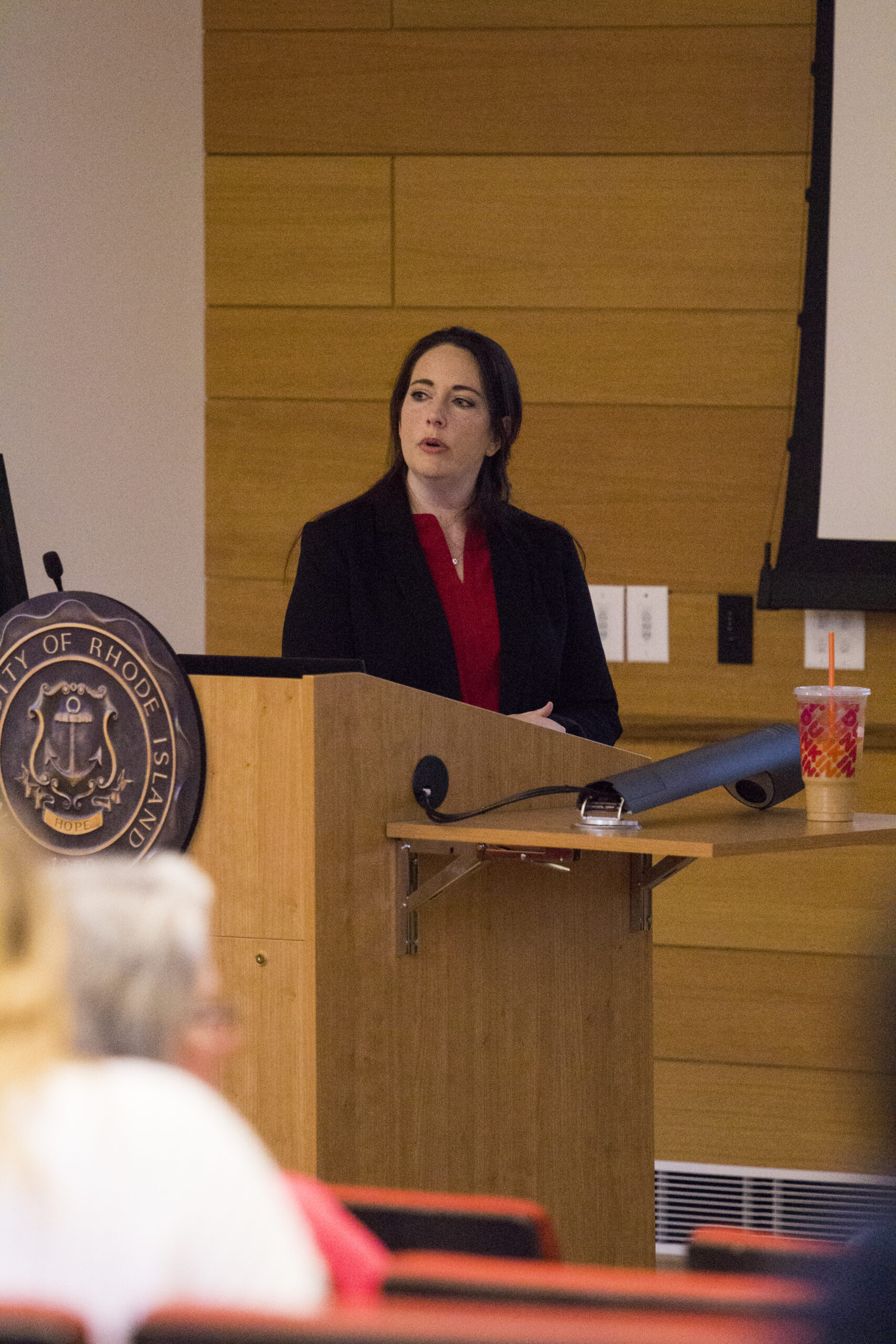Forensic Scientist Jessi T. Brown speaks about the evolution of DNA analysis in law enforcement. Photo by James McIntosh.
On crime television shows, DNA analysis takes place in a matter of seconds by a computer. In reality, DNA analysis can take months to do and is done by humans. That is why forensic scientist Jessi T. Brown spoke about the evolution of DNA analysis on Feb. 14 during a seminar titled Rapid DNA: Changing the Paradigm.
Rapid DNA is a hands-free process of developing a DNA profile from a reference sample without human intervention, according to Brown. Until rapid DNA was developed, every sample had to be tested in a certified lab by DNA analysts which conventionally takes months to produce results. The ANDE machine, which is one of the first Rapid DNA machines, allows analysts to work quickly on straightforward cases, giving them more time to work on complex cases, as the ANDE Corporation, where Brown works, claims that its machine can identify DNA in less than two hours.
The machine was used by law enforcement for the first time during the 2018 California Camp Fire. After doubts as to how effective this new machine would be during its inaugural use, these hesitations were soon proven wrong after results were pulled from the very first sample taken at the scene.
“We were able to identify 30-40 people on the first day,” Brown said.
The machine is easy for both technical and non-technical users. Police officers who have no training on the machine can use an interface to make operations easier; while users like DNA analysts can see a different interface that allows them to understand the results.
ANDE has applications also outside of the law enforcement system. For example, ANDE’s machine is already being used at the southern border of the U.S. The machine can be used to test the relationship of people crossing the border, which can reduce human trafficking at the border, according to Brown. ANDE is also being used to identify disaster victims, prisoners of war and dead soldiers.
People have voiced concerns about the ANDE machine’s privacy issues. According to Brown, some people fear that their DNA information could be released, but Brown claims that the machine is highly secure.
“A lot of people are very concerned about the database and their privacy,” said Brown. “There are so many safeguards that protect the database from people that shouldn’t be accessing the database. Your state already has to have an arrestee law [a law that allows DNA collection upon arrest] on the books that says you can collect that sample, they have to have the machine and have to get a number of qualifications. They also have to have access to the state identification bureau’s DNA system in order to tap into the actual database.”
Brown has been working in the forensic science field since 2008, starting at Baltimore City Crime Lab prior to her work at ANDE. Brown said she comes from a family of law enforcement workers, detailing her experiences going to work with her grandmother at the Orange County Sheriff’s office in California.
“I used to play with her fingerprint pad and magnifying glasses,” said Brown. “I spent a lot of time in the sheriff’s office and she had the police scanner on at our house 24/7. My mother believes this had an effect on my formative years.”
Brown said she did not always want to go into crime enforcement. For a time she worked at a drug store and thought she was fit for a job in that field, obtaining a degree in health science. While she was working on getting into a graduate program, her significant other convinced her to move to Baltimore City to work in the Crime Lab where she would work for nearly 8 years, until the Baltimore Riots.
“When the Baltimore Riots broke out, it was not a fun time to be in Baltimore,” said Brown. “The riot’s front line was about a block from our house. We spent about four days with a helicopter and the SWAT team was forming a barricade at the end of our street. We spent a couple of nights and then we decided it might be time to leave. So we moved to Massachusetts and I started to work at ANDE.”
The lecture was different from many others in the seminar series because it dealt with newer technology.
“I love keeping up with the field and that was kind of the takeaway for this one because it didn’t go into depth,” Professor Jimmi Oxley, who coordinates the forensic science seminar, said. “In this case, I pushed the speaker to tell them a little bit more about conventional [DNA].”





